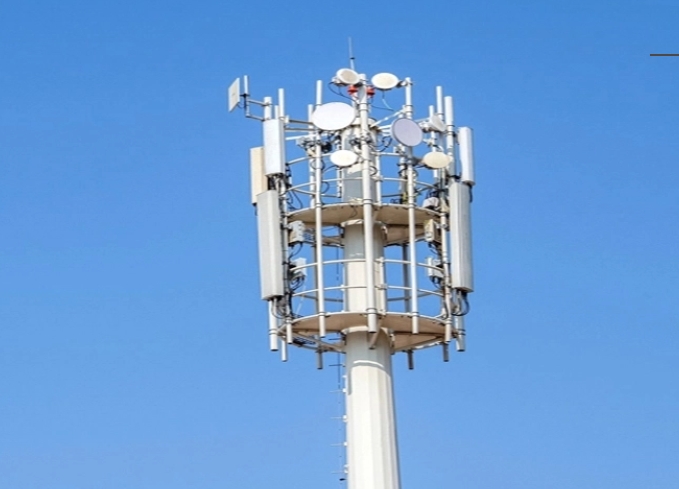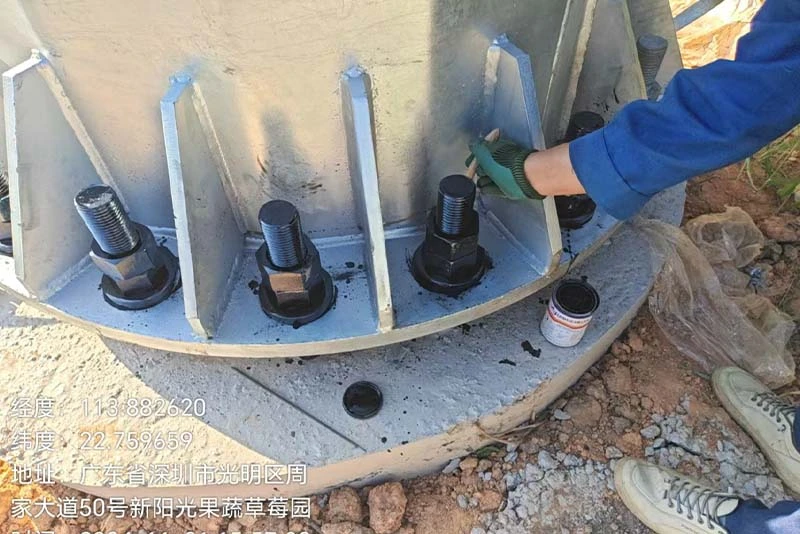Monopole towers have become a ubiquitous part of modern infrastructure, particularly in telecommunications, lighting, and power transmission applications. Their sleek design and efficient use of space make them a popular choice. Understanding the fundamental characteristics of these structures, like those offered on our monopole tower is crucial for engineers, project managers, and procurement specialists. Let's delve into the key attributes that define a monopole tower.

A primary characteristic of any steel tower structure is its ability to safely handle various loads. Monopole towers are meticulously engineered to withstand:
Wind Loads: This is often the most critical design factor. The tower's shape, height, and surface area are calculated to resist prevailing wind speeds and potential gusts according to specific regional codes and standards.
Equipment Loads: They must support the weight and wind area of attached equipment, such as antennas, dishes, transmission lines, or lighting fixtures. The design accounts for the number, size, and position of these attachments.
Ice Loads: In colder climates, the potential accumulation of ice adds significant weight and increases the wind profile, which must be factored into the structural design.
Seismic Loads: In earthquake-prone areas, the tower design incorporates calculations to withstand ground motion forces. The structural integrity relies on the steel's strength and the tower's geometry to manage these combined forces effectively.
The physical form of the monopole is a defining characteristic. Key aspects include:
Cross-Section: Monopoles typically feature a circular (tubular) or polygonal (e.g., 12-sided, 16-sided, 18-sided) cross-section. Polygonal shapes offer high strength-to-weight ratios and are often easier to fabricate and connect.
Tapering: Most monopole towers are tapered, meaning they are wider at the base and gradually become narrower towards the top. This optimizes material usage, placing more strength where bending moments are highest (at the base) while reducing weight and wind resistance aloft.
Material and Finish: High-strength steel is the standard material. Crucially, monopoles are almost always hot-dip galvanized after fabrication. This zinc coating provides excellent, long-lasting protection against corrosion, ensuring durability even in harsh environmental conditions.
How the tower is assembled and anchored is fundamental to its characteristics:
Section Joints: Monopoles are usually fabricated in multiple sections for transport and erection. These sections are typically joined using either:
lip Joints: One section sleeve-fits tightly over the section below it, relying on friction and gravity. This is common for many monopoles due to its simplicity and clean look.
Flange Joints: Sections are bolted together using matching steel flanges welded to the ends of each section. This method is often used for heavier towers or where precise alignment is critical.
Base Plate and Foundation: The bottom section of the monopole is welded to a substantial steel base plate. This plate is then anchored to a concrete foundation (e.g., pier, mat, or caisson) using large anchor bolts embedded in the concrete. This connection transfers all the tower loads safely into the ground.
Compared to other tower types like lattice steel pole, monopoles possess distinct spatial and visual characteristics:
Minimal Footprint: One of the most significant advantages is their relatively small ground space requirement. This makes them ideal for installation in urban areas, alongside roads, or in locations where land availability is limited. The foundation itself is the main spatial requirement.
Streamlined Appearance: Monopoles generally have a cleaner, less visually obtrusive profile than multi-legged lattice towers. Their single-pole design is often considered more aesthetically pleasing, allowing them to blend more easily into various landscapes, which is often a requirement for zoning and permitting approvals.
